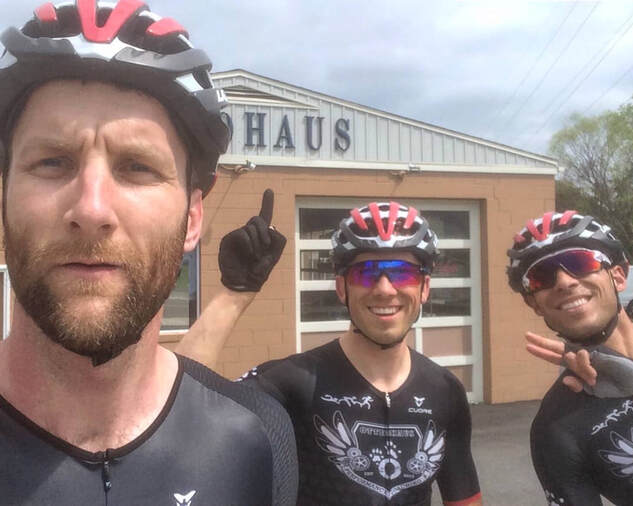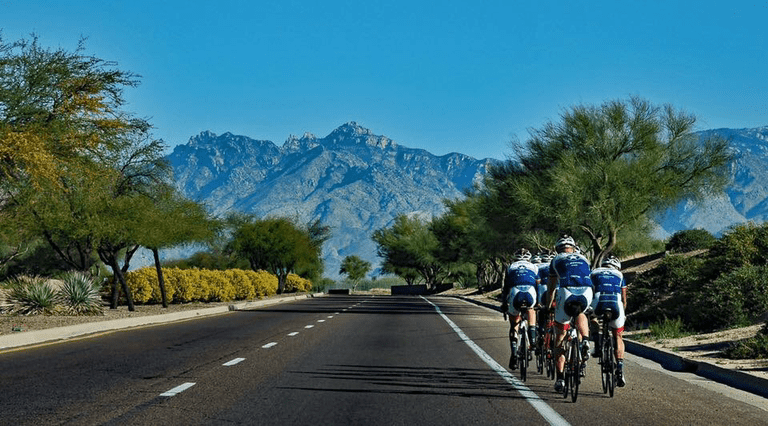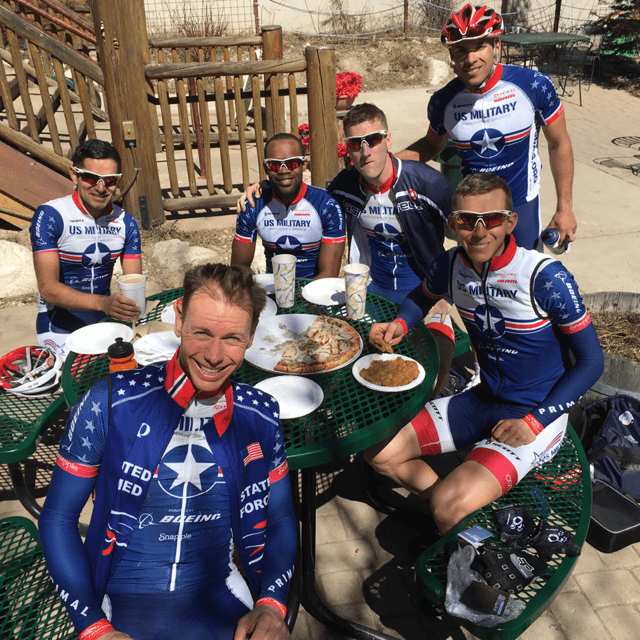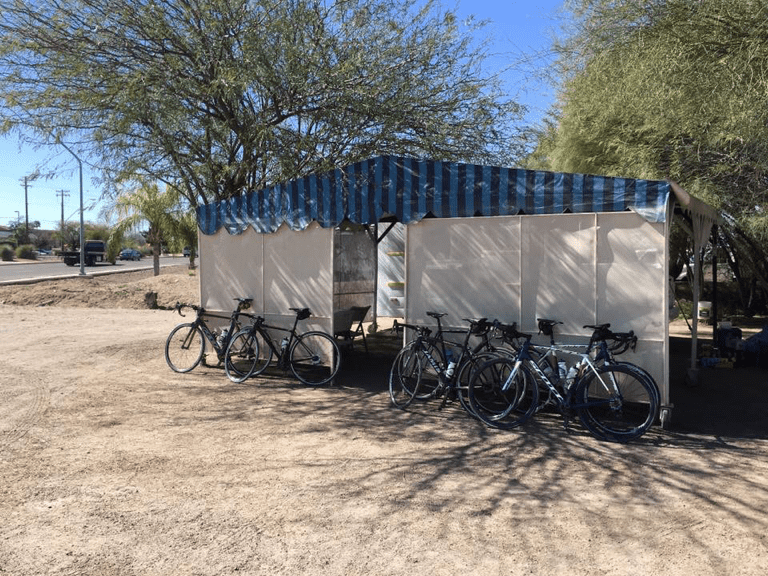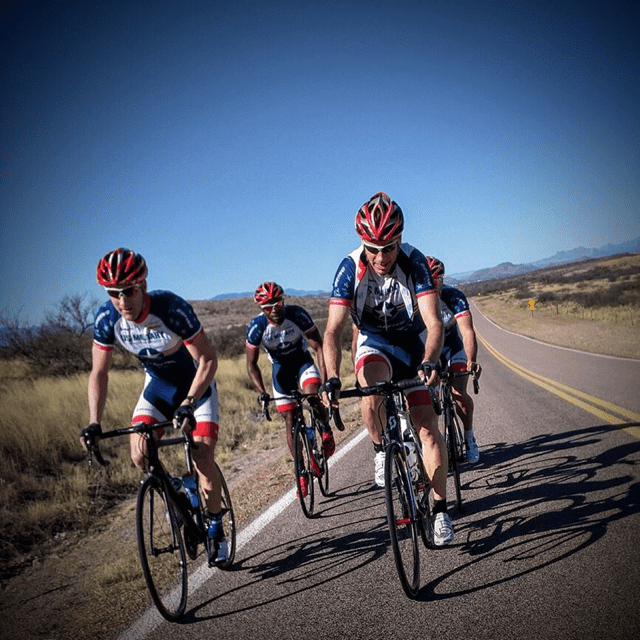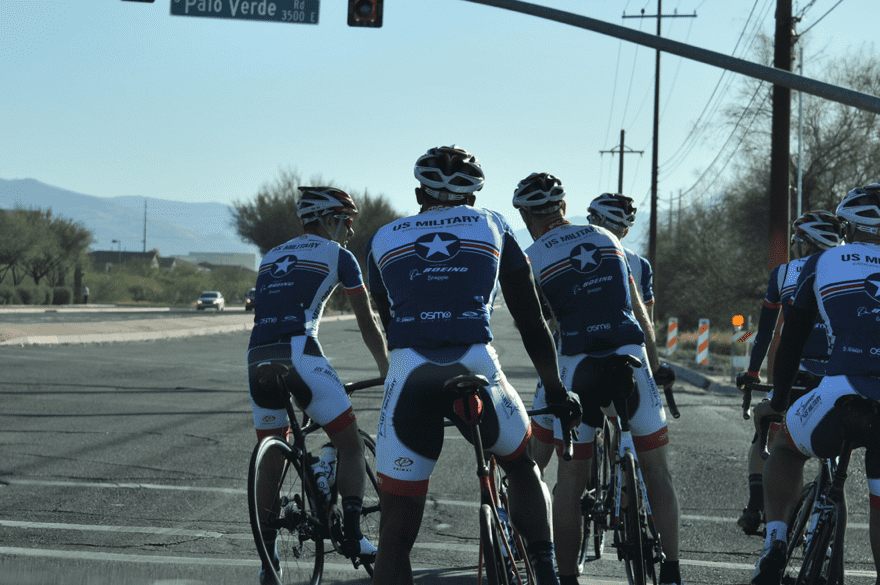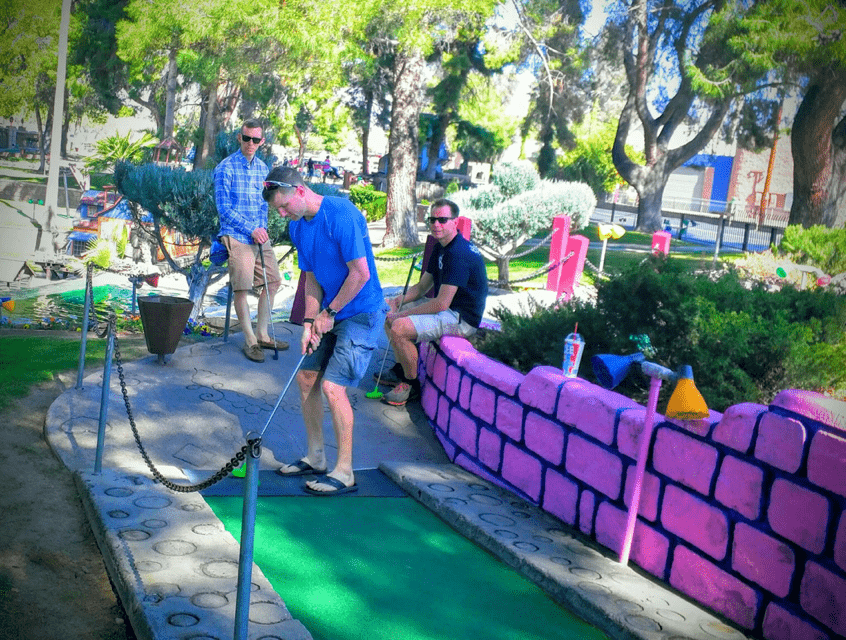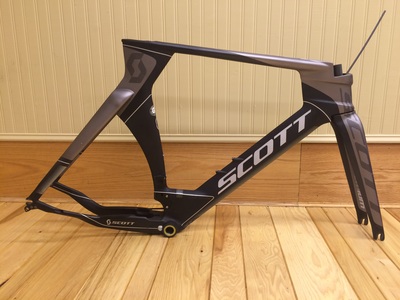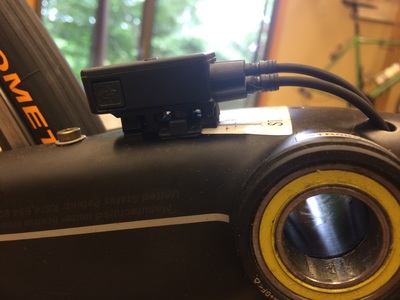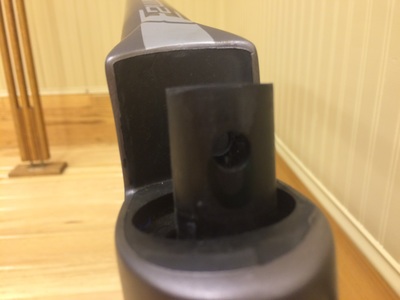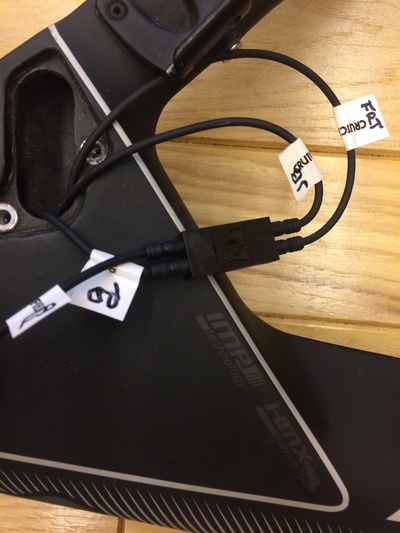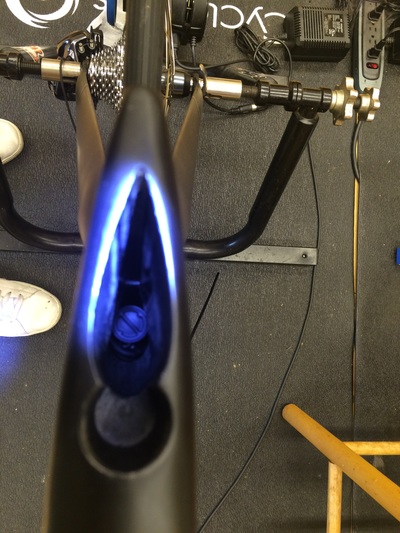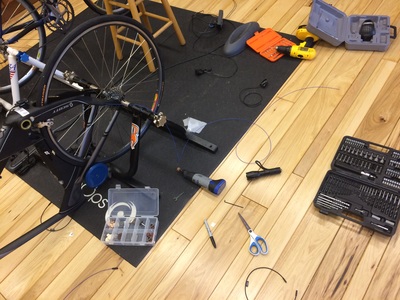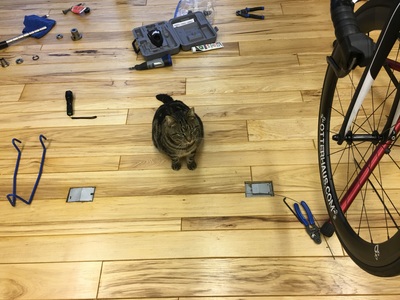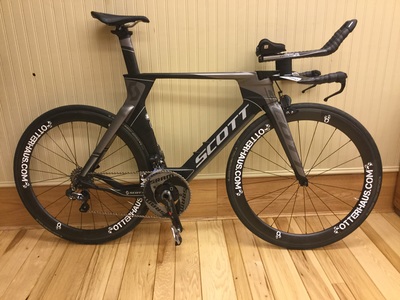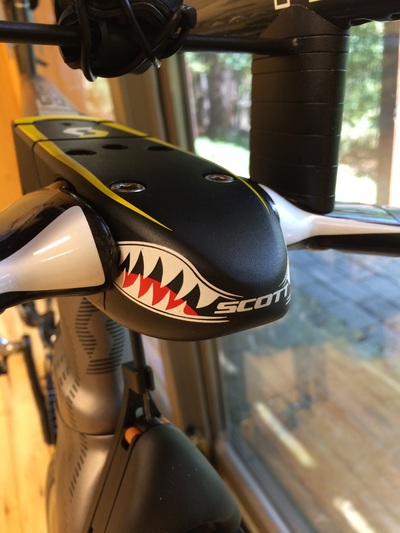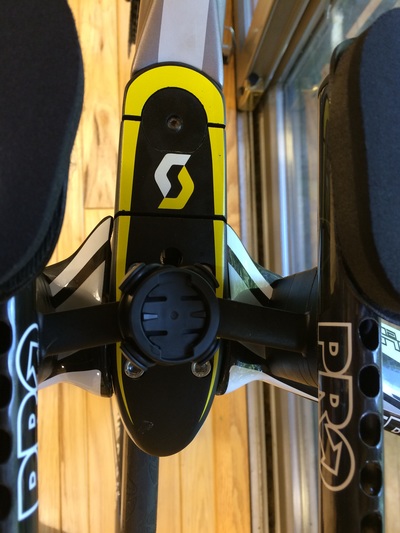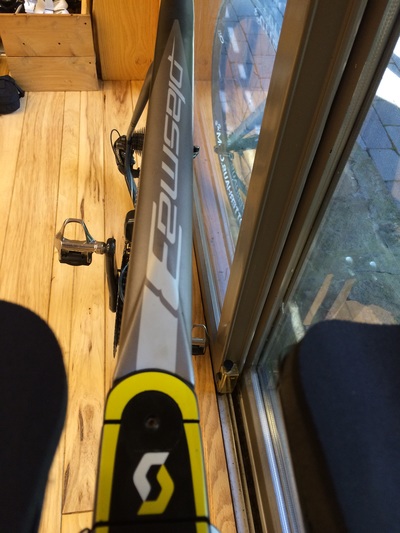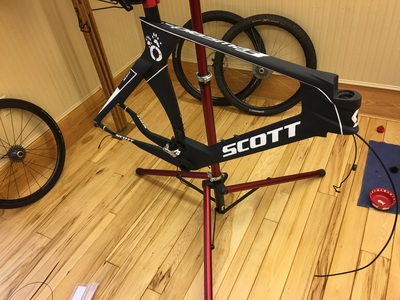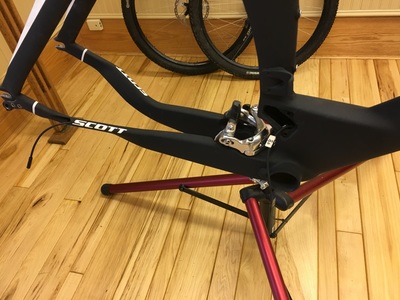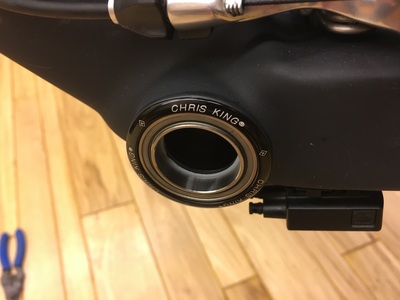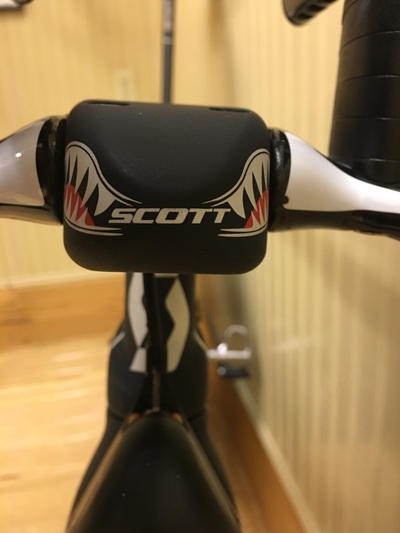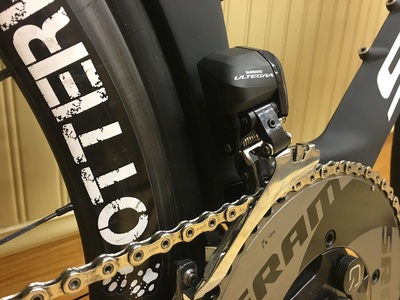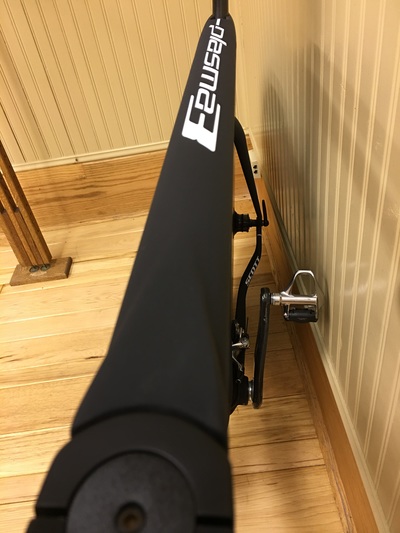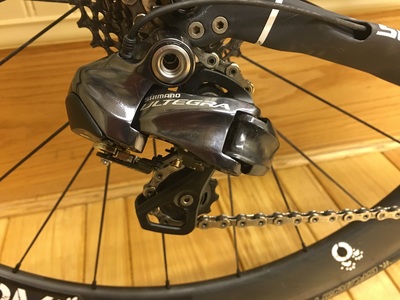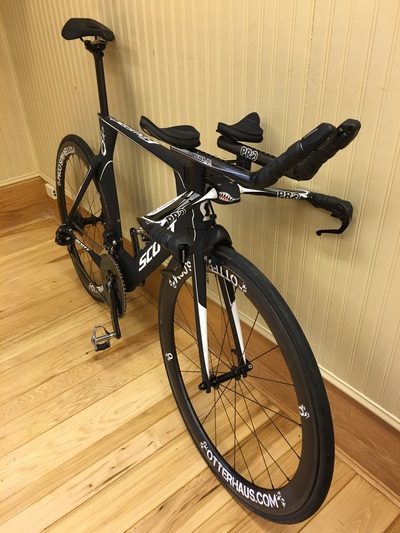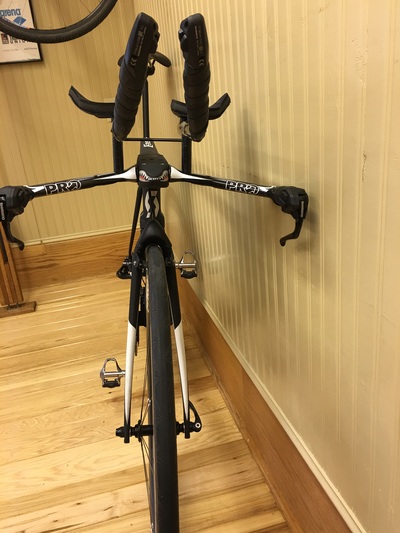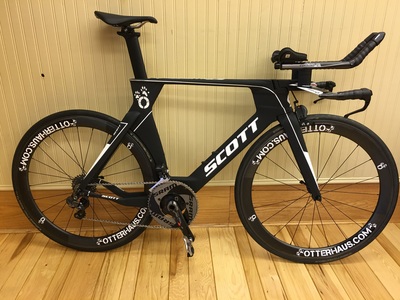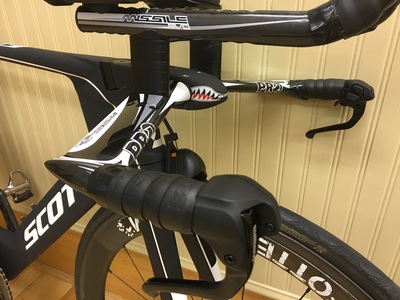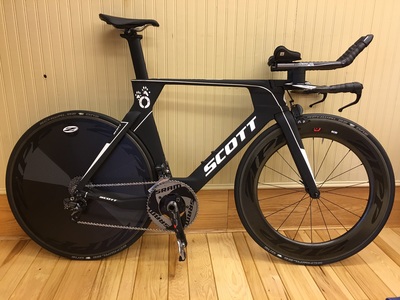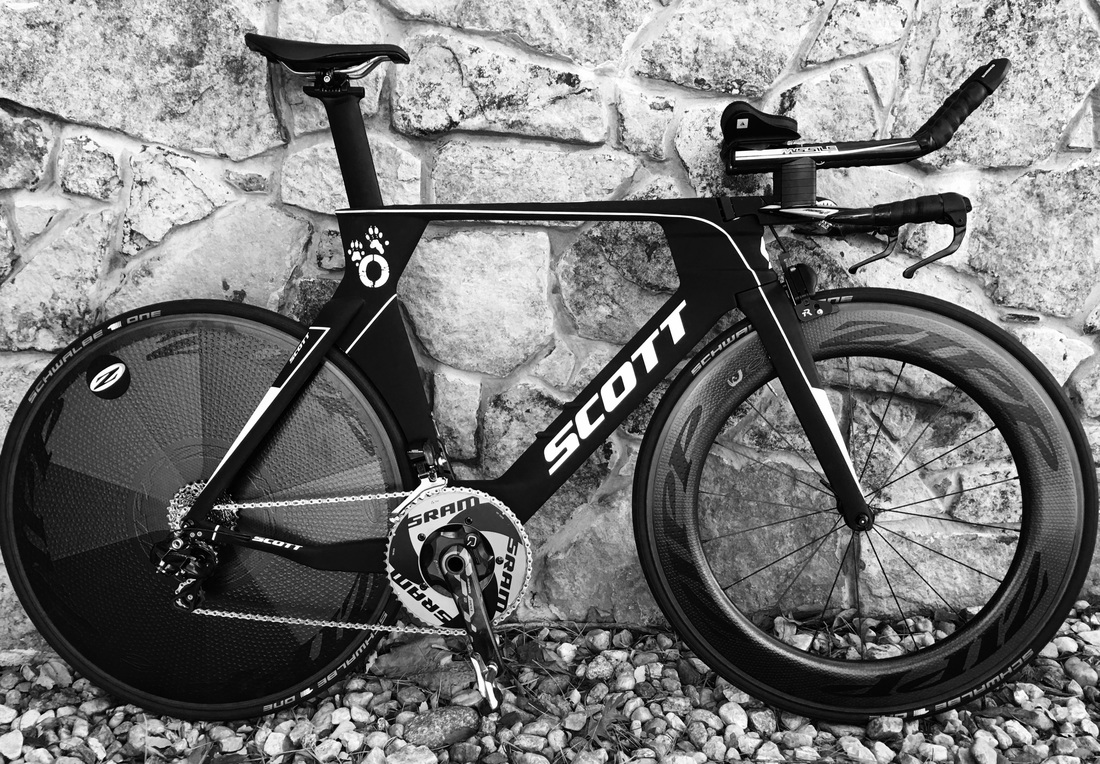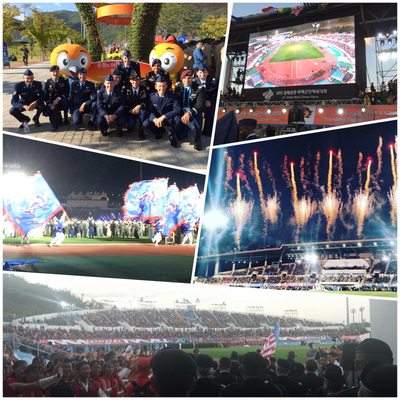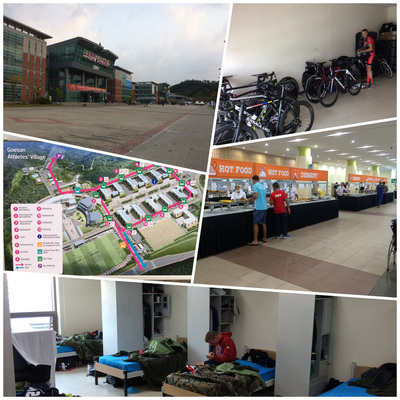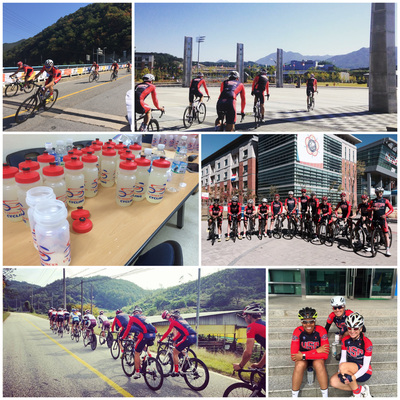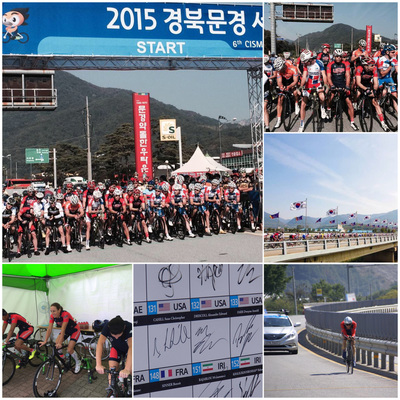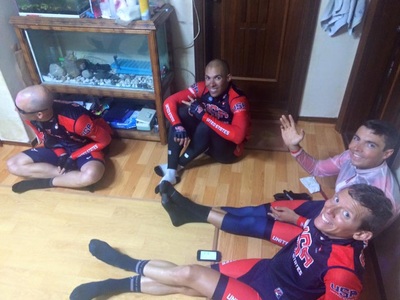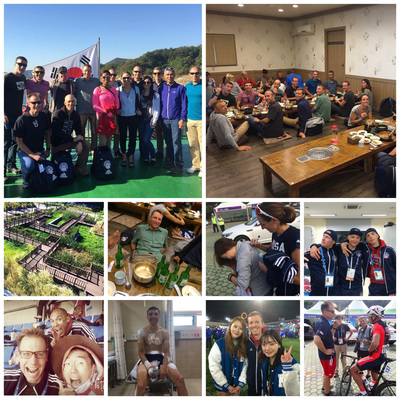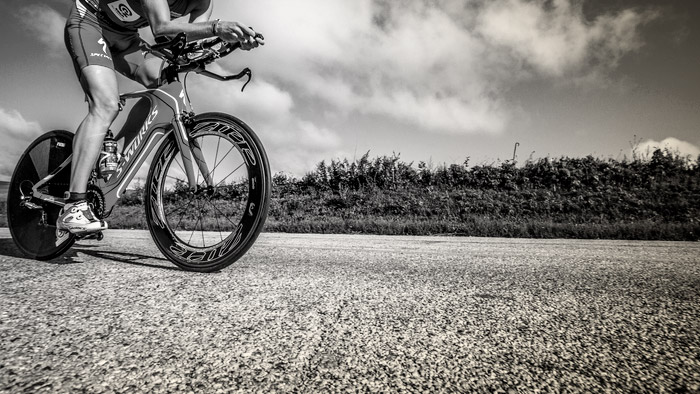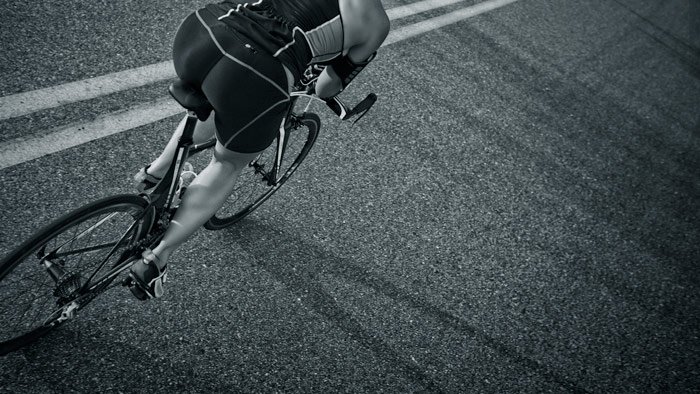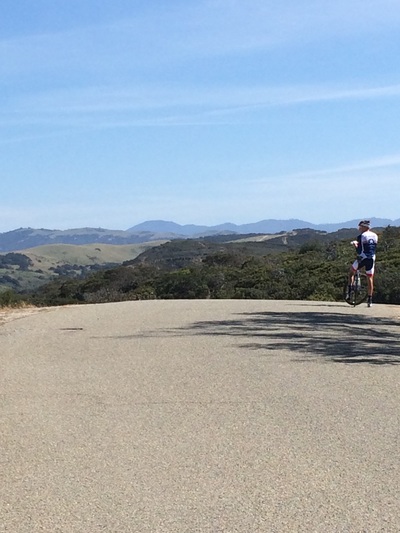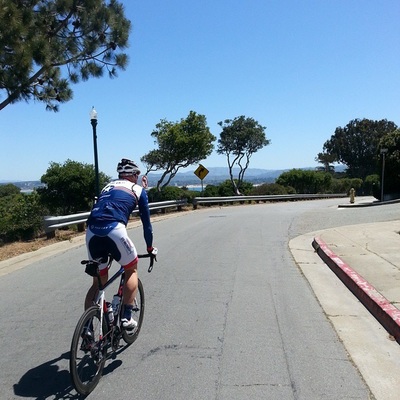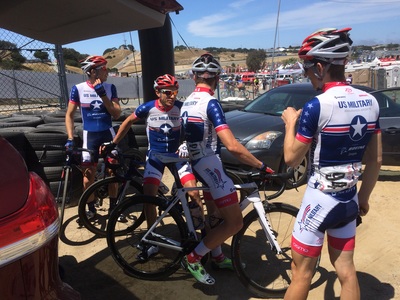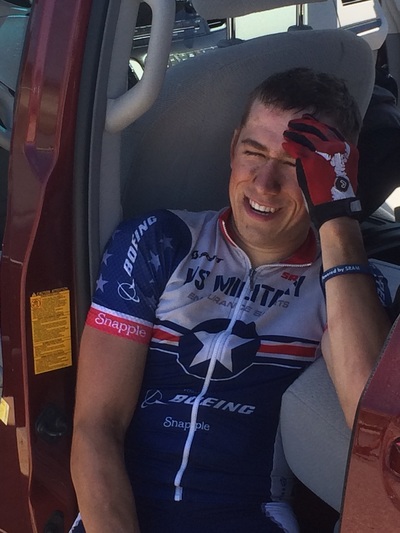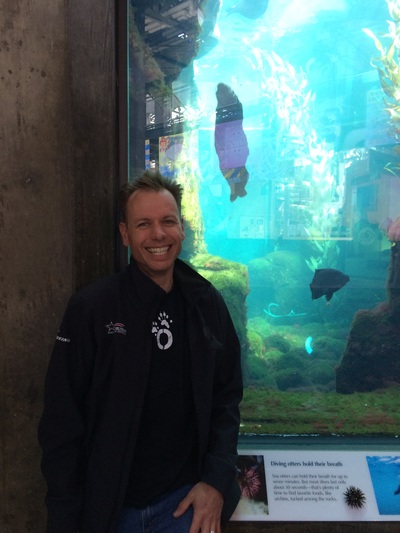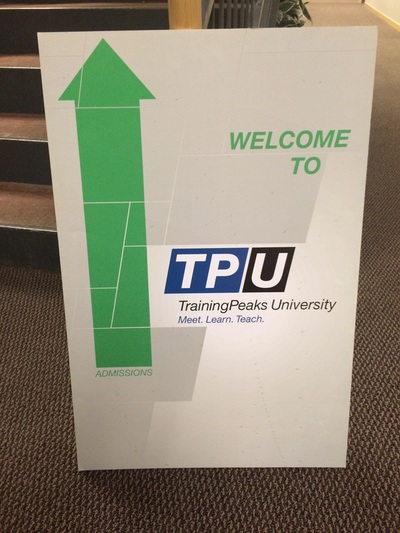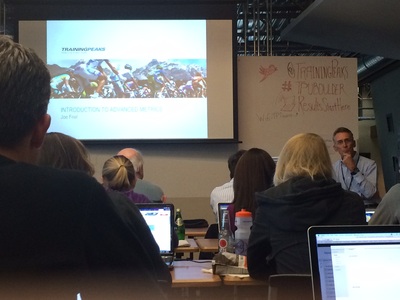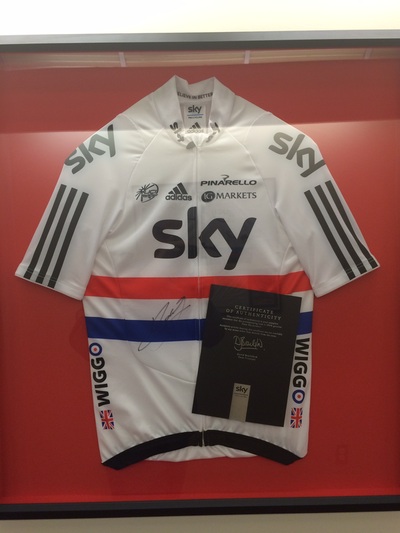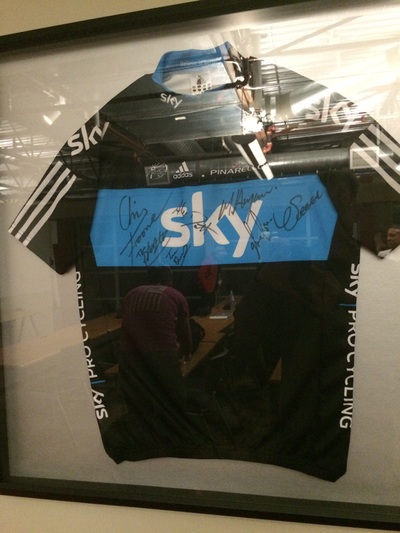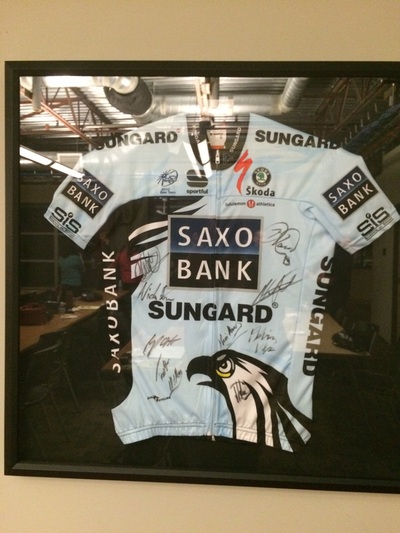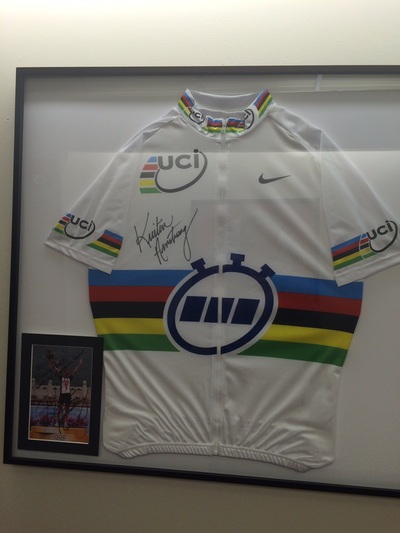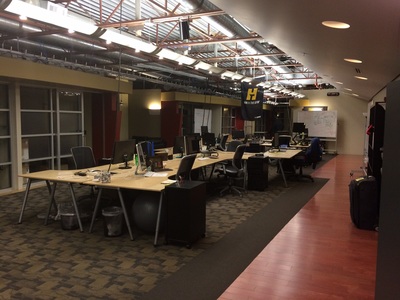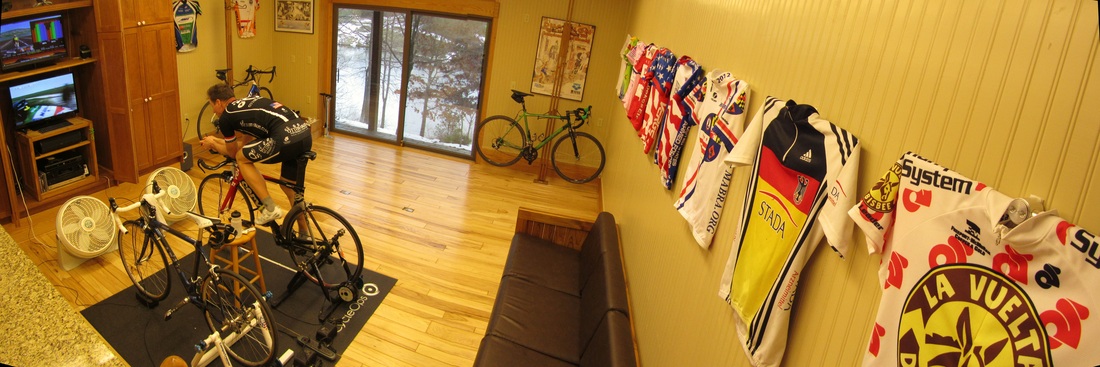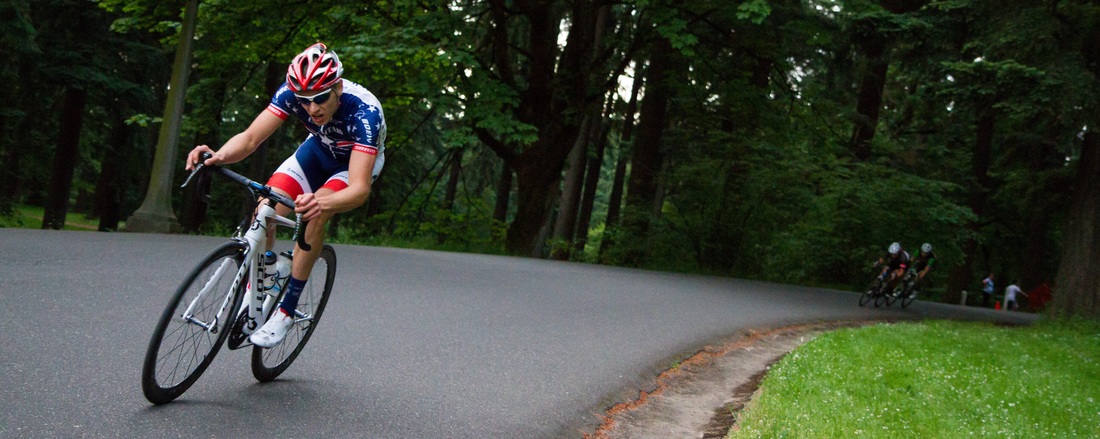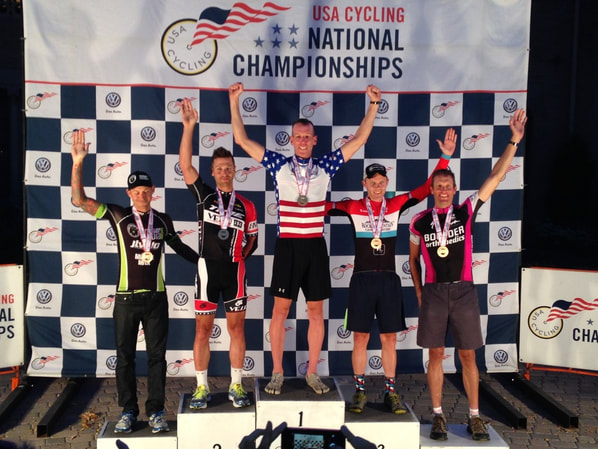|
Athlete updates have moved from our blog to Instagram: Please give us a follow @otterhauscoach for news and updates on our athletes!
Have had a few clients prepping for big events lately, so thought I would consolidate the links and share these articles from a few years back that hit on some key things to consider for event prep. Enjoy, hope they help! I had the opportunity to lead the US Military Endurance Sports Cat 1/2 road cycling team on a training trip to Southern Arizona earlier this month. We spent 3 fantastic days training in Cochise County, in and around Bisbee, Tombstone and Sierra Vista, and then moved to Tucson for the last 4 days. It was a great trip and I wanted to take the opportunity to reflect a bit on the value these camps have and offer a few tips for those considering one down the road.
Fitness This is what most folks think of when they think of camps, big miles in nice weather in order to boost fitness. From a coaching perspective, camps are a relatively high risk, high potential reward endeavor. The major training overload interjected in one sitting pretty much breaks every rule in the book in terms of applying stress, recovering and repeating at a slightly higher level. However, taking folks out of their normal environment and allowing them to just focus 100% on cycling in new surroundings for a short period, can be a huge motivator. The stress/recovery equation can normally be managed if the coach and athlete are careful in paying extra attention to recovery leading up to a camp, during and after. Generally having a steady build up over the winter; dropping volume and intensity the week before camp; ensuring good sleep, nutrition, stretching and massage (if available) and lots of down time during camp; and planning a light training/recovery week post camp, will reduce the risk of injury and fatigue and maximize fitness gains. Nutrition High volume camps are not the place to try to shed those couple extra pounds by cutting calories. Athletes are already under additional stress from increased volume and likely intensity, and burning significantly more calories than normal. Quality nutrition is an important part of the recovery equation to ensure riders can continue to put in the big days without getting sick or overly fatigued. Camp is a great time to reinforce good nutrition habits with more time to focus on cycling related activities: Quality nutrition at each meal, including plenty of nutrient dense fruits and vegetables, vice too many empty calories; staying hydrated both on and off the bike; developing a good nutrition strategy on the bike to prevent "bonking" late in rides; and having a post ride recovery drink followed by a quality post ride meal. Team and Skills Building Its one thing to wear the same jersey, but to truly function well as a road team, especially at the elite level, team members need to understand, and have trust and faith in each other's skills and abilities, and have a true interest in the successes of their teammates in addition to their own personal ambitions. This can't be measured on a chart or with a number, but it is what most often makes or breaks elite amateur cycling teams. Successful regional and local teams are usually able to facilitate this pretty well with teammates often being friends already and training, racing and participating in group rides frequently. But with a geographically diverse team, those opportunities are rarer, and the importance of camps increases. Providing an opportunity outside of competition for teammates to work on road skills and allowing athletes to interact and bond as a team and develop friendships is tremendously important. While you can't "make" people be friends, you can certainly create opportunities, situations and establish common goals to help foster it and develop better riders and teams because of it. Post Camp Depression Kind of a joke, but its for real. The return to work and "normal life" post camp, plus the body shifting into recovery mode after a big chunk of work, can leave athletes feeling a bit dragged out and grumpy. This is totally normal. A few days to a week of recovery mixing lighter rides and/or days off along with stretching, maybe a massage, and working back into a regular schedule and most folks are feeling pretty good. Camps can be a fantastic experience and set the tone for racing season in general by improving fitness, developing team bonds and reinforcing good habits. If you get the opportunity to participate or organize one for your program, I highly encourage it! Thanks for reading, and check out some pics below from our recent camp to AZ! Note: Special thanks to Beth Kelsey for follow car support for the Tucson portion of the trip, M&M Cycling in Sierra Vista for their mechanical support, and Dan Minjares and Stu Carter for the great Mt Lemmon photography (and pizza!). Something a little different for the blog this go round. My wife, Jen, serves as the inspiration for this post. Jen and I met 23 years ago this month while running in opposite directions on a frigid morning in Connecticut. Normally a bit shy around girls, I got a wild hair, turned around and tried to chat her up, poorly I might add, but I must have done something right. We hit it off quickly, and the rest, as they say is history. 23 years later, she continues to amaze and inspire me and others. She currently works as a senior civilian in an extremely challenging position for the US Coast Guard, and is a highly regarded leader in government information technology. On top of that, over the last 3 years she has worked extremely hard in her free time to become an accomplished author under the pen name J.B. Rockwell. To date, she has several short story credits to her name and 4 novels, each one receiving good reviews and seeing increased popularity as she continues to hone her craft and works to grow her audience. She has left competitive running behind, but she still runs nearly every day, often in conditions that would make even the hardiest competitors think twice. In honor of the positive influence Jen has had on my life, and the recent release of her latest book Serengeti, here are 5 books that that have influenced me as an athlete and coach, some through education, and some through inspiration. Maybe they will influence you or someone you know as well. The Wormburners by John Craig I picked up this book in junior high and the story always kind of stuck with me. It’s about an informal inner city cross country running club and how the members used it as an outlet for the challenges in their daily lives and found commonality in their commitment to the sport and its challenges. Even at a young age, I could really the relate to the “do it for the love of the sport” and “embrace and enjoy the process of improvement” aspects of the book which are themes I tend to stress with my athletes. The Cyclists Training Bible by Joe Friel I read this when I first transitioned from multi sport to cycling in the early 2000’s, and it provides a lot of detail on general training philosophies and structured approaches for cyclists. You may love or hate “formalized” training, but if you are a cyclist adhering to any type of generally accepted training approach, its likely based in some part on ideas in this book and/or from its author. The Self-Coached Runner: Cross Country & the Shorter Distances by Allan Lawrence Another book from junior high. I picked this up when I was trying to figure out how to train for local youth track meets. This really got me interested in the “process” from a more structured standpoint and helped me understand how to train as a runner. Despite the book’s age, and advances in sports science and gadgetry, the fundamentals in it are still sound. Training and Racing with a Power Meter by Hunter Allen and Andrew Coggan I bought and poured through this book in the mid 2000’s as I started to see I had some ability as a cyclist and incorporated a power meter in my training. Even though some of the equipment sections are dated, it’s the most complete outline on how and why to use power for cycling and is a fantastic reference for any coach or athlete that wants to know more about using power as a tool. Once A Runner by John L Parker My all-time favorite athletics book. It follows the “miles of trials” of fictional collegiate runner Quenton Cassidy in pursing running a 4 minute mile. But it is so much more. It’s an honest, inspirational read that really captures the soul of elite level running written by someone who has been close to the top of the sport. The author really has a talent for articulating what drives passionate runners to do the crazy things they do. Its core themes are running related, but I think any endurance athlete can relate to the themes of dedication, passion and borderline obsession. I get a lot of questions on the Performance Management Chart (PMC) from athletes. Its a popular topic that can get complicated quickly, so thought I would post a short primer that goes over the basics. The PMC and its related terminology was developed originally by Dr. Andy Coggan. TrainingPeaks licenses the concepts and an automated version is built into the TrainingPeaks tool. When looking at the physical/fitness components of training, the most fundamental elements any coach or athlete need to consider in prescribing a training plan are: volume (how much) intensity (how hard) and frequency or recovery (how often) a training “load” is being applied to an athlete. The PMC provides coaches and athletes an objective way to monitor fitness, stress loads and fatigue levels to better manage these factors. Here is a sample chart for reference as we walk through the elements: The red “dots” are an index of “stress” for individual workouts based on the intensity and duration, called Training Stress Score or TSS. As a baseline, the power, HR or average pace an athlete can hold for 1 hr all out results in a 100 TSS. This is also considered the athlete’s threshold power, HR or pace. TSS for individual workouts are calculated based on the intensity and duration and are the basic data elements for the remaining calculations. A high intensity short workout and a lower intensity longer workout could both trigger a similar training stress score (TSS). A key point here, the more accurate the athlete’s threshold numbers for power, HR and/or pace are, the more useful these charts are in monitoring the athlete’s status.
The pink line is an index measuring the exponential avg amount of TSS the athlete has accumulated during an acute or short 1 week period (ATL for Acute Training Load). It’s also described as “fatigue” or the short term stress that athlete has been subjected to. The blue line is similar, but it’s the exponential avg TSS over a chronic or longer 42 day period (CTL or Chronic Training Load). It’s also described as “fitness” or the long term stress the athlete has been subjected to. The 7 and 42 day periods are defaults that have proven to be good markers based on research. TrainingPeaks actually allows you to change these defaults if you desire, but I have not really found a case where that is necessary. The literature associated with this approach outlines some general ranges for CTL. Personally, I have not found these values to reflect a reasonable load for most working athletes. From my experience, it’s difficult to account for daily work related stress, running around, chasing kids, up early, to bed late etc. I have found that “target” values over a season are individual. I recommend paying the most attention to the slope of CTL (fitness) and how steadily an athlete is progressing over time as stress is added via either volume or intensity or both. TrainingPeaks mobile provides metrics to track these trends as well. The yellow line (Training Stress Balance or TSB) is basically the difference between fitness and fatigue and it correlates to how “tired” or how “fresh” an athlete might be given how much short term and long term stress has accumulated. For example, a 4 hr ride with tempo efforts in it early in the season when an athlete is less fit will likely make the athlete more tired, and require more recovery, than the same ride later in the season when an athlete is more fit and has more “work” under their belt. TSB can be very useful in correlating and even predicting when an athlete is going to feel pretty good or might start feeling tired, drug out an at risk for illness. Like everything, it is a little different for each individual, but in general under a good load, -10 to -20 seems to be about as deep as you want to go for any period of time. Most athletes hitting below -20 generally start seeing some lingering fatigue, feel tired and run higher risk of illness. Start getting into +10 and above and the athlete may feel tired at first as their body starts to shift to recovery mode, but then they usually feel good shortly after that, this is usually where we want to see you after a rest period and going into bigger races. Again the specifics depend on the individual and how accurate their threshold numbers are, but the general trends seem to hold. I can't stress enough that you shouldn't base everything on this chart, just like you would never drive your car using gauges alone. The chart is a great decision support tool, especially for remote coaches who are trying to gain insight into how their athletes are responding to the training plans they are being prescribed. For more info on TSS and the PMC, check out these TrainingPeaks articles: http://home.trainingpeaks.com/blog/article/applying-the-numbers-part-2-training-stress-score https://www.trainingpeaks.com/blog/what-is-the-performance-management-chart/ 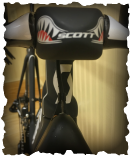 This has nothing to do with coaching, or athletes, but it has a bike involved, and it was a fun custom build project that I wanted to document and share somewhere. I like to time trial, probably my strongest personal discipline. I like the man/machine integration and just like putting it all out there without a lot of head games. Scott Bikes happens to be a generous supporter of the US Military Endurance Sports Elite program, but sponsor arrangements aside, I have always been a fan of their Plasma 3 time trial frame. The stem/top tube integration just looks really cool and I love the "Flying Tigers" shark teeth on the stem of the full TT version. In the first couple of years of release, they had a TT configuration with a flat stem and was only usable with Di2 electronic shifting, and all of the cables routed internally (and tediously) through the bars, stem and frame for a super clean look. Oh yeah, and it tested fairly well in the tunnel, and it happens to fit me well, but mostly I just liked it and all those other things were bonuses :-). Unfortunately, the "TT" version with the full internal cable routing and the flat shark stem saw very limited public release. However, after some investigation, I discovered that with a few carefully implemented (but somewhat nerve racking) modifications, the readily available consumer version could be adapted to the full TT version's former glory. I have built up most of the bikes I have ever owned, so know my way around fairly well, so as a custom project, I decided to set out to see if I could create my own version. In the end, it took on a life of its own and the final build ended up with a custom paint job from Hot Tubes. Here is the photo documentation of the multi month effort along with some build notes (hover over or click the pictures for the comments). Hope you enjoy and can appreciate the end result! I was fortunate to get the opportunity to serve as the men's and women's cycling director for the US Armed Forces Cycling Team at the World Military Games in South Korea over the last 2 weeks, and the experience was amazing. News outlets have reported different numbers, but its safe to say there were over 7,000 athletes from 100 countries competing in 25 different disciplines, the event was massive by any measure. Below are recaps of the cycling events that were pushed out day of on social media, and a short photo journal of some of the highlights of the trip.
Men's and Women's Time Trial: The course for both races was a 2 lap out and back on rolling terrain and with a lot of open exposure to the wind. Melissa Talent and Shannon Gaffney placed a solid 6th and 7th respectively in the 9 deep women's TT chasing the extremely strong Russian and Brazil contingents who dominated all the of the women's cycling events. Stefan Zavislan had a breakthrough performance finishing a strong 12th out of 26th in the men's TT, just :15 out of the top ten, with Ian Holt placing 20th. Women's Road Race Recap: Melissa Tallent, Shannon Gaffney and Gabriella Allong all raced great today in the 2nd ever Women's Military World Cycling Champs. Brazil and Russia dominated the race with each putting 2 riders in the winning 4 rider break that went from the gun. Melissa, Shannon & Gabby all rode strong in the main field with Shannon picking up 11th in the finale with a great lead out from Melissa and the team placing 4th in team standings. Awesome to help support the squad and hope the experience inspires them and other women to continue to work hard with an eye on future CISMs! Men's Road Race Recap: Results never tell the whole story in bike racing, its a cruel sport at times with huge efforts often going unrewarded. On paper our best result was 45th and we were 9th in the team comp, but Ian Holt, Dwayne Farr, Stefan Zavislan, Alex Driscoll, Jose Solis, Michael Gallagher, Sean Cahill and Jay ShalekBriski raced fantastic today against a top notch field. Our play was getting into moves which we executed extremely well with representation in every major break. Ian Holt worked to get in the most promising move of the day with 8 riders staying away for about 25k only getting caught with 2k to go. Without a strong sprinter, we didn't have many other options for a major placing and rolled in with the field or close behind. Jay ended up in a crash mid race which diminished our strength but soldiered on to the finish. Tough day but everyone left everything out there, learned from the experience and they are hungry for more. Click or hover over the pics below for a little more insight into the trip. Fantastic to get another opportunity to work with TrainingPeaks on a guest blog post. This article provides an overview of a new modeling tool called Best Bike Split that can provide insight into time trial and triathlon bike split planning and execution. Check out the full article here:
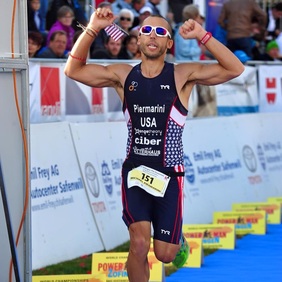 Michael Piermarini came to me via the TrainingPeaks Coach Match program in July. He had qualified to represent the US at the Long Course Duathlon World Championships at Powerman Zofingen in Switzerland in September and was looking for a coach to help him train for the event. If you aren’t familiar with it, Powerman Zofingen is brutal and is considered by many as the toughest duathlon in the world. The event consists of a 10k run, 150k bike and 30k run, all over very hilly terrain, including several trail and dirt sections on the runs. Racers are also faced with changing and often nasty weather conditions as well which creates unique preparation and mental challenges for the athlete. Michael had a background in running and multi-sport, but had never done an event longer than a half ironman prior to this, and had never ridden his bike that far, nor had he faced climbing of the likes of Zofingen before. Our primary goal was finishing, and any place targets beyond that would be a bonus. Given this, we focused primarily on building volume both on the run and bike to ensure both mentally and physically he could cover the distance. We also focused on pacing and developing a race and nutrition plan that he could execute confidently on race day. We spent a lot of time looking beyond just fitness and discussing mental prep along with gear and clothing given the likely conditions expected at the race. In the end, he pulled off a great result and hit all of his goals for the event. What follows is Michael’s post race analysis: “I wanted to send an update on the event itself and some thoughts moving forward. First and foremost, thank you for preparing me for the event in Switzerland itself. It seriously wouldn't have been possible without your assistance and guidance. You kept me grounded and highly focused throughout the training process, which helped make crossing the finish line possible. Thank you so much for everything. I know we normally talk about the specifics of training but I want you to know that it wouldn't have been possible or achievable without you, so bask in it and know how sincerely grateful I am! Thank you George! Overall: the event itself was a truly amazing experience. Just being in the meeting rooms and at the starting line next to some of the world’s best athletes was tremendous. I never thought I would be standing there, let alone performing on the course. From a course perspective, it was brutal. Absolutely brutal. The mountains were no joke and most people walked or DNF. Even the woman's overall winner (Pooley) from Great Britain walked the hills. The first run was extremely fun, it started off nearly vertical and then slowly came down hill, winding through off and on road terrain. It was two loops. I picked it up a bit on the second loop as the athletes spread out. I believe it was 39 minutes or so. Not bad given the inclines (I would say 16-18%+ the first 2.5-3k). A lot of people walked the second lap and even more dropped out...surprising Transition one was decently quick (90 seconds). The bike course started off at a decent 2% incline the first 10k or so. Then the first big climb came up. There was a big group of us together and they were handing out penalties left and right. There were 18 referees and I saw at least 25-30 cards handed out. The first hill had a significant incline % increase towards the top and then flattened out and came downhill. I didn't pedal the downhill and just cruised to save my legs. We then came through a little town and made a U-turn. At this point, my face dropped and my mouth was WIDE open...the hill coming up was insane. The next 5-10k was the toughest part of the bike course. Averaged 5-7 mph up the entire hill. Athletes, top athletes, were walking their bikes up...I stayed on and just plugged through, staying focused and riding the ups and downs of the road to gain momentum where I could. At the top, it leveled out and went rolling, FAST hills for a bit. Then the last hill came up and it was a windy one through the forest. It POURED hard the entire first lap and half of the second one. I would have hit the downhills a little harder but with the sharp turns in the mountains and wet roads, I wanted to play it conservative and not go flying off the edge. A lot of accidents on the course itself (broken legs, arms, etc.). My family said that there were people pulling off the bike course every lap. I just tried to stay consistent on the bike course itself, not improve, but maintain. I think I did that but haven't quite looked at the data yet. Once in transition again, (80-90 seconds) I took off and started. This was the most grueling run course I have ever experienced. The first 3k were all uphill and a mix of on and off road. Then it went downhill just slightly before picking back up. There were 3 really big inclines on each 15k loop of the run course. I broke it down and tried to crush them one at a time. People were walking right and left (both men and women). This is where everyone looked destroyed and defeated. More people dropped out here. I tried to stay as consistent as possible. Feeling wise, I felt great throughout. I lost feeling in my legs during the first 5k of the second run course and just kept going. Again, consistency and respect for the course was my focus. Honestly, had I known there was only a 10 minute gap between where I finished overall and a podium spot, I would have pushed a little harder. I respected the course and ran my own race. I started 106th overall and finished 66th. 5th in my age with a 5 minute gap between 4th and a 10 minute between 3rd. Thank you again!” Glad Michael was able to experience success in such a memorable event and super happy to have helped him take on this amazing challenge! Fantastic to get the opportunity to guest blog for the TrainingPeaks blog! Check out my post that outlines Normalized Power and how its used.
 Making the decision to start using power as a training tool can be both exciting and intimidating at the same time. Here are 6 practical tips that will hopefully help make the power learning curve a little less steep for beginners, and are great reminders for the experienced power meter user as well.

Nutritionist Lori Nedescu, RD LD, contributes a guest blog examining the nutritional component of endurance sports competition. Similar to training plans, optimal nutrition strategies are specific to the individual athlete, the competition type, conditions, duration and intensity. This article outlines general guidelines and sample fueling and hydrating strategies for reference as a good starting point.
Introduction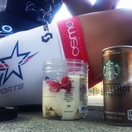
During athletic competition, the body is being asked to meet great demands. In order to achieve top performance, it is key to fuel your body properly. Many athletes eat well and practice fueling in normal day-to-day training, yet when race day comes, fueling issues seem to be the cause of disaster. Keep in mind that while training, a variety of exercise methods (long run/bike, tempo, sprints, strength, etc) in order to fine-tune your bodies ability to perform on race day. Nutrition should be approached in that way as well; training the body under various fueling methods to determine a race day plan. Here we will discuss the body's energy needs, common fueling problems, ways to address such problems and common fueling strategies. Finally, we will examine sample plans of adequate race fueling methods for various sports. After reading this document, the athlete should feel more prepared to meet their individual fueling needs during competition.
Common Fueling Issues & Overcoming Them
Nutrition Fueling Basics
Common Food & Drink Examples and Caloric Value
Common Fueling Strategies: Race Day
Sample Plan For A Half Ironman
Your Plan
Remember that every athlete's body and competition goals are different. This means your individual needs may differ from the common approach. If you are struggling with meeting nutrition needs, begin working one-on-one with a registered dietitian.
Was fortunate to be able to take the US Military Endurance Sports elite squad to the Sea Otter Classic at the Laguna Seca race track just outside of Monterrey California a couple of weeks ago.
For those that aren't familiar with it, Sea Otter is a festival that celebrates all things cycling. At its center is an expo with booths featuring nearly every major vendor from the cycling industry. Surrounding that is bike racing in nearly every discipline on the road and off road, and at all levels from beginner to professional, over a 5 day period. The goal of the USMES elite programs is to give the military’s best endurance athletes opportunities to experience national level competition and continue their development. I serve as director for the program and Sea Otter is an opportunity to give our cyclists experience at a major pro/am event and allow both the elite team and the club leadership to interact with some of our sponsors. From a director perspective, an event of this size is a bit nerve racking as it’s a bit of a challenge logistically getting athletes to and from airports, food, events and to and from sponsor responsibilities while predicting traffic density and parking availability etc. We were able to pull it all off though with everyone making their starts with no panic, and getting the support they needed along with keeping our generous sponsors happy. As far as the racing goes, the guys did a solid job and gained some great experience, but left hungry for more. Our roadies, Jay ShalekBriski, Stefan Zavislan and Dwayne Farr, were in the mix every day in the pro field, took some chances and made the final splits in the road race and criterium finishing in the top 20 in both of these events. Considering in the past we struggled to finish these events at Sea Otter, and now we are putting 2-3 guys in the main splits that is progress to be proud of for sure, but at the same time I know they can aspire for more! I think the key thing was it showed them they can be a factor with some of the pro team and top amateur teams and the experience helped to build confidence and continue develop their fitness and skills. In the mountain biking events, David Flaten continues to show great progress moving up 40 spots from his best finishes in the past in fields that are much deeper then they have been historically. He was literally rubbing elbows with the best mountain bikers in the world. Its great to be part of a program that is focused on nurturing talent and continuing to raise their game. Thanks for reading, and check out some of the pictures form the trip below! "Ask A Coach" is intended to address some fundamental training questions that come up from athletes time to time. The focus is on questions that experienced athletes may take for granted, and new athletes may be afraid to ask. What is power and what will a power meter do to make me faster? Last time, we went over the fundamentals of power and power meters. If you missed it, you can check it out here. To understand how power can be used in a training program, let’s first consider the most fundamental aspects of training itself. An athlete improves or becomes more “fit” by applying stress to their body through a combination of exercise volume and intensity. The body at first breaks down and then adapts to that stress via recovery. In turn the athlete becomes stronger through that adaptation and can then handle additional stress via more volume and/or intensity and the cycle repeats. Sounds simple enough, but every person and their situation is different. So when developing a training protocol there are many fundamental questions: How much stress for how long is enough for a particular athlete? How much is too much? When does an athlete need to recover and for how long? Is the athlete getting “fitter” or not? Given this variability, determining the optimum duration and intensity of exercise for a particular ability level, physiology, goals and time is the big challenge for any athlete and for coaches working with them. Having objective insight into what the body is doing on a given day, and what the physiological limits of the body are at any given period during a training cycle, is hugely beneficial and is what power capture and monitoring provide. Prior to power, perceived effort or “feel” and heart rate were the primary methods available to manage an athlete’s training protocols. Each of these methods still has value, and can be used alone or alongside power, but each have limitations and issues to consider. Subjective “feel” is still a very important thing for athletes to develop. But, interpretation of “sensations” as they relate to what is actually going on in the body can be right on or misleading depending on the individual when used alone. Plus, if the athlete is using a coach, there is the additional challenge of communication and interpretation to ensure coach and athlete are on the same page. It takes time to sort out the signals an athlete’s body is sending, and there is a lot more trial and error in the process and more room for misinterpretation of signals. Heart rate (HR) was a step in the right direction of removing some subjectivity, but it’s a lagging indicator, meaning its giving you an indicator of what HAS happened where power is giving you an indicator of what is happening right at that instance in time. Additionally, HR is impacted more by environmental conditions and hydration in its effectiveness. As of today, power is the most direct and “pure” objective measurement of effort we have. Through the use of some fundamental exercise science principals, and a couple of decades worth of real world testing and analysis, an athlete or coach well versed in power training can more precisely adjust and monitor an athlete’s training protocols. There are also methods to monitor stress levels, “fitness”, and recovery allowing for more accurate adjustments to duration and intensity both short and long term. All that said, a power meter is not a prerequisite for riding a bike. Even if you have competitive goals, there is nothing wrong with grabbing a bike and just riding. Especially if you are new to the sport, the additional information can be overwhelming at the start and may stifle the development of good instincts and “feel”. Also, some people have a fantastic intuitive sense of feel either naturally or developed over time, and can effectively self-monitor effort levels. Other athletes may have a long history of using HR and can still very effectively train using either of those methods alone. But in any case, if you have performance goals and have access to someone with knowledge in looking at the data and applying it (or spend the time to learn how to do it yourself), a power meter is only going to provide additional insight into your training effectiveness. Ultimately this insight can help you get to your goals quicker and more precisely develop and monitor your training to do so. "Ask A Coach" is intended to address some fundamental training questions that come up from athletes time to time. The focus is on questions that experienced athletes may take for granted, and new athletes may be afraid to ask. Hopefully this is more popular than the short lived "Ask A Couch" which didn't get very far. What is power and what will a power meter do to make me faster?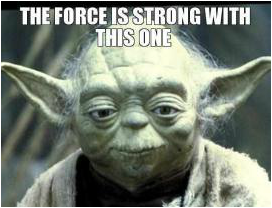 I am going to break this question into two parts. First let’s start off with what power is, and what a power meter is and does, then in the next entry, we will go into some more detail on the benefits of power in a training program and how a knowledgeable athlete or coach can use it to positive effect. Without getting too science-y, power is the rate of work (or force times distance) a system is producing over time. That rate of work is represented in Watts which is Joules/Second or more simply energy expended per second. A power meter, is a strain gauge and some electronics packed either in a crank set, pedals or the rear hub of a wheel. When you apply force to the pedals, the meter can sense disturbances in that force applied. (sorry, Obi Wan, couldn’t help myself) The meter also has a way to transmit that force reading to a handlebar display and capture device. The combination of these two devices measures the work being done and displays it in Watts instantaneously for the rider to see, in addition to capturing a data stream of power readings, usually in 1 second samples, of an entire workout for further analysis post exercise. So in a simple but fuller picture, your body turns food into biochemical energy, and that biochemical energy is turned into mechanical energy when you turn the pedals. You are literally “doing work” by applying force to the pedals, producing power which is measured in Watts and in turn making speed! The meter is capturing a record of that output and displaying the immediate power output instantaneously. None of this on its own makes a rider a faster. The meter and display unit are just giving you a number on your handlebar that changes every second depending on how “hard” or “soft” you are turning the pedals. The value comes in the interpretation of that data by a knowledgeable individual and then applying it to an athlete’s training program. The data captured by the meter provides insight into the athlete’s current ability and how hard or easy they are training at a given time, and enables the establishment of parameters to optimize how an athlete trains given their ability, goals, potential and individual situation. The less time and more constraints they have, the more beneficial this becomes to whomever is designing the athlete's training approach. Next time we will go into a bit more detail why using power in training can be beneficial relative to other methods of measuring effort. If you have questions or comments, please feel free to post up. I had the opportunity to attend TrainingPeaks University this past weekend, a seminar for coaches held at the TrainingPeaks HQ in Boulder CO. The course was designed to appeal to broad range of knowledge and experience levels and covered a number of topics including:
During the discussions there was also an opportunity to contribute new ideas and to understand the drivers for development priorities and where they were going at a "hands on" level with the tool sets. The major theme in forward looking items was further expansion in prediction via additional data analysis and data streams. One of the more interesting "gee whiz" items was the potential for power meters for runners to be a practical option soon. It will be interesting to see if they are accepted by the culture and impact running and multisport coaching and athlete preparation as much as they have in cycling. I felt I knew my way around the existing applications pretty well going in, but there were definitely some new tricks and capabilities that came to light during the session that were great to learn about It was good to have some focused "hands on" time to move around the tools in a classroom setting and explore some of the capabilities you may not have had the need or time to work with before. Also, it was beneficial to exchange notes with other coaches and help answer questions with issues others maybe having and vice versa. In addition, it was fantastic to hear about the history of the company and how it has evolved, and to meet and hear training lectures directly from both Joe and Dirk Friel who have been so influential in the direction of cycling and multisport training over the past 2 decades. I think the most beneficial aspect for me personally, was meeting a lot of the people who work at TrainingPeaks, many of whom I have worked with on the phone or via help desk emails on occasion, and seeing the facility. Seeing a motivated, passionate and genuinely helpful team gives me a lot of faith in the company, its products and philosophies. As a former information technology professional, it was great to see a vibrant culture behind the scenes. Overall it was a great experience, earth shattering, no, but it really wasn't meant to be. I think most coaches would find it as review and/or building upon a base of knowledge they have already established. It was more of a way to "sharpen the saw" for any of you old school Covey folks out there. I am definitely glad I attended and picked up some new knowledge that I will apply to current and future clients. Overall I felt it was well worth the investment. Tolerance levels on when one needs to ride indoors vary, but with the exception of the warmest climates, even the hardiest of cyclists will likely have to succumb to the realities of weather, road conditions and darkness at some point during the winter. When that point comes along, here are a few pointers that will hopefully make the experience more bearable if not somewhat enjoyable:
Pick a good environment: Everyone’s domestic situation is different, but picking a comfortable room to setup your trainer or rollers in is a big first step. I know a few athletes who say they can’t stand riding inside but then come to find out they have banished themselves to dark dank basements or garages with poor lighting, no climate control with their trainer squeezed in between unpacked boxes from their last move. Regardless of the space you are in, making it comfortable, well lit, clean and as inviting as possible will do wonders for your attitude towards indoor riding. Get a good fan. It’s not wimpy, when you ride outside you have 15 to 25 mph of wind keeping you cool all the time, you should have it inside as well. Sweating in puddles may feel all Rocky like but it does you no good unless you are a high school wrestler trying to make weight. With a good fan (the spinning type, not the cheering type, although those are nice as well), you will be able to ride longer and your equipment, body and housemates/guests will thank you. Floor fans that you can angle to direct the air work best. Protect the “nether” regions. Tough topic, but saddle sores seem to be more common in the winter for athletes who have to do a lot of indoor riding. Being locked in place and not having the variety of motion to vary pressure points exacerbates the issue. A few recommended approaches to handling this:
Entertain yourself! There is no reason to be miserable. TVs, computers, tablets and audio devices are cheap these days. Any of those can provide hours of audio and video entertainment. If you have the disposable income, advanced indoor trainers such as Computrainer interact with your computer or tablet to provide a virtual course to ride and change resistance to simulate varying terrain. There are also a number of companies that provide cycling specific videos that incorporate workouts into the video and you can use whatever trainer or rollers you have. Pick your poison, expensive, cheap, cycling related, non-cycling related, whatever works and is within your budget, but just don’t stare at the wall hyper focusing on how awful it is to ride inside. Review guru DC Rainmaker provides an excellent overview of trainers and training apps that you may want to consider on his website. Give yourself a break. If doing rides over an hour, take a 5 minute break every 45 minutes to an hour. Re fill bottles, stretch a bit, take a natural break. It does wonders for your mental state. Also, due to the continuous nature of riding on a trainer or rollers (no coasting or drafting) you are really riding longer indoors for a given amount of time. The general rule of thumb is 45 minutes inside is equivalent to 60 minutes outside in terms of stress on the legs. Shorten and intensify. Some folks can slog out hours on the trainer, but if you don’t have the time or level of tolerance, inserting some higher intensity interval training, cadence or isolated leg drills to mix things up can help keep your fitness and technique going in the right direction without boring yourself to tears. There are numerous articles out there on options. A classic option is warm up and then 2 x 10-20 minutes at 85-95% of your Functional Threshold Power (FTP = Intensity you can hold for an hour all) with half the interval length as rest in between repeats. Bring a friend. My wife and I have trainers set up side by side and often ride on the weekends or early in the morning together. Have someone to ride with can help pass the time as well. Eat, drink and be merry! Keep up with your nutrition and hydration. Indoor winter environments are dry and fairly warm, closer to late spring and early summer conditions, and a great opportunity to practice your nutrition strategy and keep on top of it. Your attitude and surroundings will determine how tolerable and beneficial your indoor training sessions can be. Spend a little time prepping you environment to make the experience as enjoyable as possible. Work with your coach or if self-coached, do a little research on your own to set up workouts that will maximize the benefits of indoor riding and minimize the mental strain to help make next season your best yet. This time of year many endurance athletes are taking a break, reflecting on their past racing season, and starting to set goals for next year. One of the most common goals, with road cyclists especially, is “upgrading” to the next racing category. For those that aren’t familiar with it, bike racing is set up on a category system. USA Cycling sanctioned events offer separate races from Category 5 (beginner) to Category 1 (elite) with further separation above Cat 1 at the “Pro” levels. Advancement between categories is based on a mix of experience and results. The idea behind the system is to: 1) give cyclists a tier structure to advance though to help develop their handling skills, tactical ability and fitness; and 2) provide different levels of competition for racers at different ability and development levels and with different time constraints. Given the nature of competition and competitors, it’s understandable why a lot of people aspire to the highest category possible and make advancement a major goal. The higher the category, the better the riders and competition, and the culture of bike racing drives us to want to challenge ourselves and compete with and be associated with “the best”. But what does it really mean to upgrade? Is an athlete really ready? Do they know what they are getting into? Just because one “can”, does it mean one “should”? The beginner categories can be pretty lopsided as everyone has to start at Cat 5. A physically strong individual might be able to “brute force” their way through lower category races without learning much in the way of tactics and race dynamics. But, unless someone short circuited the system, every rider at the “next” level was a top rider at the “prior” level. This means the talent keeps concentrating as you move from one category to the next. As riders move up, the difference between rider fitness and ability shrinks, speeds increase and team dynamics start to play more of a factor. Tactics that worked before, might not have an impact, and the margin of error for decision making is much smaller. A sharper tactical acumen is needed to be successful when everyone is faster, stronger, smarter and more organized. On top of it, distances of events increase which means more dedicated and focused training time required (plus additional recovery time) to prepare the athlete for the increase speed and distance. The combined impact of all of this is it takes more time and effort and is more difficult to get results at the higher levels of bike racing. This may seem obvious, but for many it comes as a surprise. This change in difficulty can have a huge mental impact on athletes who are used to seeing success every weekend in lower categories, or worse, ones who have barely scraped together minor results to get enough points to move up to the next category. I have sadly seen athletes underestimate the combined challenges associated with upgrading and actually end up quitting the sport, especially going from Cat 3 to Cat 2. That said, I am not trying to dissuade upgrading. I believe in the value of competition and aspiring to a higher level is a good way to challenge yourself and one of the key reasons why we are drawn to sport. But don’t let the drive to upgrade become all-consuming without considering the full picture. Athletes can become like the proverbial dog chasing a car, they are so focused on chasing it, they don’t consider what happens if they actually catch it. In addition, racers shouldn’t underestimate the developmental benefits of spending time at each category and “learning the ropes” by competing in a variety of events, including race types that don't suit their strengths and some out of region races where the competition levels may be different. Exposure to different racing types, competition levels and tactical situations will help a rider gain valuable experience and make them a more complete racer. I encourage those considering an upgrade to talk to more experienced riders who are racing at the next level and take some time to reflect on their individual personal situation and be honest about their ability level before making the decision to move up. Many racers would benefit by not hyper focusing on the upgrade itself and instead focusing more on developing fitness, honing skills, gaining a variety of race experience and **gasp** having fun! The upgrade will come in time if you continue to see improvements in these areas and can maintain balance with all your other life factors. And if it doesn't happen, so be it, as long as you are are having fun, there is nothing wrong with enjoying the sport you love at whatever category fits best for you. Photo: Dwayne Farr, US Military Cycling, Mt Tabor Portland, OR Courtesy Tim Yarnell 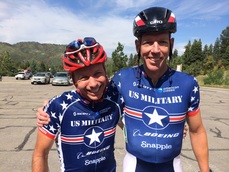 I was fortunate to get the opportunity to travel to 4 states and participate in 5 races as both a director and an athlete and attend my first Interbike in a 2 week time frame from late Aug to early Sept. It was a busy trip but a good experience. I am going to document each stop briefly over the coming days. Well, I originally intended to do this earlier, but took me a bit to get around to it. Stop 2 was direct from Burlington, VT to sunny Salt Lake City, UT, followed by a nice drive to Ogden UT for the next stop on my tour, the USA Cycling Master's Road Racing National Championships. 3 days of stage racing and an early wake up had me feeling a bit groggy, but I did my best to sleep on the plane flight out knowing I had to race the Time Trial the following morning. I got into Ogden at a reasonable hour and found my way to the Air BnB house that one of my traveling companions (Stu Waring from the Annapolis Bicycle Racing Team) booked for us outside of Ogden. The place was absolutely fantastic with plenty of space and beautiful views within close driving distance to both the TT and RR courses. In addition to Stu and his wife Christine, I was fortunate to have 2 teammates join me on the trip , Scott and Katy Giles, the cycling wonder couple both racing with me on the US Military Endurance Sports Team in addition to Matt Albanese Stu's teammate from ABRT and their friend Chris. The risk with doing a crazy trip like this is staying healthy. I managed to keep my recovery and stress pretty in check, my preps were done and I hit the sack pretty early, so all was looking good until the early morning wakeup... Let's just say my "plumbing" started working a bit too well and too often. I clearly picked up some type of funk, but did my best to stay hydrated and try to keep some nutrition in me and put on a brave face for the TT the next morning. But, I just didn't have the spark on the day, and ended up a disappointing 15th. Both Scott and Katy did fantastic, each pulling down silver medals in their respective divisions! I couldn't help but be a bit disappointed as I had good form coming into the week, the course suited me, and when I am "on" I can throw down a good TT. But it was not to be and I wasn't at my best and wasn't able to put down a good performance. Such is the fickleness of sport. I was still having issues the rest of the day healthwise, but got another good night's sleep and felt better the following day as we previewed the road race course. The course again suited me fairly well with a long descent at the start followed by several flat loops around a reservoir and then into a 7 mile finishing climb that was never terribly steep. Scott and I are similar types of riders, we favor the break and riding hard and on form can match each other pretty well with him having an edge on the flats and me having an edge on the climbs. I had raced a few bigger master's races such as Gila, Cascade and prior Master's Nats in the past, so I knew some of the contenders, and they knew me and were likely not going to give me much leash, but Scott was a little less known... We devised a strategy to put him up the road early, like from the gun early, hopefully draw some guys out to go with him and then hope the in fighting in the field, or over confidence the break would come back on the climb, would let them get enough of a gap to make it stick. If not, I would sweep as best could on the climb. Race morning I was feeling better and was motivated having a strong teammate with me. We set off, and the plan worked pretty much as we laid out. Scott made it off the front in the 1st K, hovered at 10 - 20 seconds solo for about 10 miles (much of it downhill) riding just hard enough to hopefully entice some bridgers. Sure enough, 2 strong guys bridged up, the field looked at each other, and they were gone. When the panic in the field started to set in, I played the good teammate and tagged on to dangerous counters and discouraged any organization as best I could. The field just kept cancelling each other out, and the gap grew. After awhile the group collectively knew that was "the move" and a bridge was going no where. After that point, enough teams kept the pace up to just let the gap hover and hope to pull it back on the climb. Our plan was working perfectly. By the time we made it to the base of the finish climb, the break had 3 minutes and it was very possible it could stick. The field went pretty ballistic at the base, I dug as hard as I could but couldn't quite make it with the best climbers. In the meantime, Scott was just burying himself and it came down to seconds at the end with him holding the chasers off hanging on to take the win and the national champion's jersey in style! I cranked out the climb as best I could and ended up 13th, feeling better than Tues, but not at my best still. Kudos to Scott on an awesome job, was great to have a small part in it. Katy did fantastic as well pulling a bronze medal in the women's race. Thanks again to Stu Waring for sharing their lodging with us and to USMES for the support in getting to the event. Also thanks to Katy and Christine for covering the feed zone for us. On to AZ and NV for the next stops on the tour.  Over the next couple of weeks I am dedicating the blog to tips you should consider for your pre-event planning. While some of these will be sport specific, most of them apply universally or the basic idea can be adapted for different disciplines. The intent is to make you think critically about key aspects of your prep and adapt it to your situation. Have questions or additional ideas or thoughts? Please feel free to post them on the blog or Facebook comments! The 6th and final installment of event prep pertains to travel and logistics. As with most of these, just a few tips if you have to travel to an event that may seem pretty basic to many, but you would be surprised… If you are driving, as obvious as it may sound, knowing where you are going and how long it’s going to take to get there is a good start. Make sure you are planning enough time in advance to get there given anticipated traffic conditions, amount of time you need to warm up, bathroom breaks along the way etc. If driving morning of, pack everything the night before in your vehicle so you don’t have to worry in the morning if you got everything in your early morning haze. If you are flying to an event and have a bike, consider how you are going to get the bike there. Airline bike fees are expensive, upwards of $100 to $150 one way depending on airline. If you plan on taking your bike on the plane, you may want to research luggage fees and factor that into your overall ticket price. As an alternative, you may want to consider shipping your bike to your event. It’s generally less expensive, as of this writing, FedEx ground is usually under $100 each way. Definitely less hassle, but requires some planning ahead and bike you can use on the home front for the days before and after the event. If you are shipping your bike to a race, make sure you allow plenty of time for it to get there! I always pad a few days if not a week onto the estimated delivery time and ride my back up or training bike while it’s in route. Of course I have pre ridden my race bike with all of its race stuff on it to make sure it’s good and done any maintenance before I packed it just like I am sure all of you who have read the entire series have… :-) When planning your flight times, make sure you allow enough time when you get there to get your bike together and give it a quick spin, check the brakes and shifting, double check the tire pressure. Always best to get there a bit early and have plenty of extra time if you have an issue. If there is a hotel involved in your travels, be strategic when picking it. Distance from the race start and any activities associated with the race is key, but also consider where you want to eat, what your breakfast options are etc. As an example, I almost always stay at Holiday Inn Express. I am not sponsored by them so not paid to say that (but if anyone from HIE is reading this, always open :-)). The reason why I stay there is the room condition is consistent and it’s a reliable predictable free breakfast that works for me with a minimal of additional fuss before a race. I always know it’s there and that I can race off it. Figure out your own option on this front, but lowest room rate may not be what it’s cracked up to be if you have to get an hour less of sleep to scrounge for breakfast, or the room is loud or uncomfortable etc. Have any other tips or suggestions? Please feel free to leave them in the comments. Thanks again for reading.  Over the next couple of weeks I am dedicating the blog to tips you should consider for your pre-event planning. While some of these will be sport specific, most of them apply universally or the basic idea can be adapted for different disciplines. The intent is to make you think critically about key aspects of your prep and adapt it to your situation. Have questions or additional ideas or thoughts? Please feel free to post them on the blog or Facebook comments! This is not going to be a manifesto on what your pre race and race day nutrition plan should actually look like. The key point I want to make is to make sure you are THINKING about your nutrition plan, have planned ahead and are prepared to execute it. That said, few thoughts on nutrition in general. I will be the first to admit I am not a nutritionist, but through experience I have a fairly pragmatic philosophy and approach to the subject. I liken race nutrition planning to selecting an approach to investing money or selecting a religion, there are a lot of different answers and ideas, and a lot of different places that preach their approach trumps all. Reality is, except for the most extreme ideas, many of the core themes are the same, and many will work, it’s just what you are comfortable with and what fits you best. The one gospel for all, always use something that you have already tried and is proven for your big events! Always try something new in training first, then at a minor race before springing it at the big show. On to the key point of this entry, thinking ahead. If you have a fancy pre-race breakfast or dinner requirement you should investigate where you are headed and ensure what you need is easily available or bring it with you. If you are a “choosey” eater, don’t cause stress for yourself or teammates by being unprepared. Same goes for race day food, you don’t need to be scrambling around trying to find Chocolate Uber Gel at the local Wally World only to find out that all they have is Strawberry Supa Gel which you have never used before. Figure out your nutrition requirements well ahead of time and make sure you have the stuff on hand to make it happen. Recognize that a race you are traveling to may not have what you are used to readily available. If unsure, bring it with you. In addition to pre race food, for races that have a feedzone you need to think ahead on that as well. Start with the basics, where are the feedzones? Are you going to have feeders with you? Do they have neutral support? Do you know what “product” they have in the feedzone and if it will be in format you can take with you? While aid stations are common place in running and triathlon, “neutral support” for a feedzone in bike racing can be a dubious term. I have seen cases of water stacked on the side with no one to hand them out, all the way to full on bike bottles with gels taped on them and options for water or “mix” and everything in between. It can be really variable so you need to try to get as much good info on the reality of things and be prepared for any option. If you are staffing a feedzone with friends or family, make it easy on them, make sure they know how to do it and what to expect. Even go as far as to practice a few times so they are comfortable. Don’t blame you mom if you miss your feed and you never explained to her how to work it. If you have teammates in the race and minimal feeders, I highly recommend water only in the feedzone. Everyone can regulate sugar intake based on food in their pockets, but nothing is worse than just wanting some water and getting some crazy mix that chokes you but your buddy swears by. If you can’t supply your own feeders, you need to learn to compromise. Of course another option is to pack an extra bottle or two in your pockets. Sure extra weight, but by the time the race gets really grippy you will have cycled through and again, have to compromise, weight or dehydration or bet a friend to come out in the feedzone. All for now. Next and last entry is travel and logistics. As always, comments, suggestions or questions , please post up in the comments section. 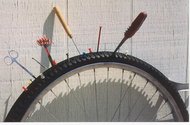 Well, there's your problem. Well, there's your problem. Over the next couple of weeks I am dedicating the blog to tips you should consider for your pre-event planning. While some of these will be sport specific, most of them apply universally or the basic idea can be adapted for different disciplines. The intent is to make you think critically about key aspects of your prep and adapt it to your situation. Have questions or additional ideas or thoughts? Please feel free to post them on the blog or Facebook comments! In addition to the rain bag that we discussed in the last entry, any number of mechanical issues could happen pre race in events that involve a bicycle. Ever hear a tire blow 10 minutes before the start? Sucks to be them right? What if that were you? Are you prepped to deal with it? What about the any number of other issues that could pop up? Below is a list of common tools, spares and sundries that you may want to consider bringing with you. If you are flying to a race, all of this may not be practical, but you can at least take some of the essentials and prepare for the most likely contingencies. In addition, having local contacts and/or a list of bike shops or making friends with neutral support where available are all great contingencies to have in place.
In addition to all of this, if you are not already familiar with basic bicycle repair, I'd highly recommend getting more familiar and comfortable with doing basic repairs on your bike. There are a number of books, videos online that can get you started, in addition several shops offer basic repair classes or a knowledgeable friend I am sure would be glad to help you out. The more you know and can handle on your own, the less you will have to worry if a major issue arises. Thanks for reading. Questions, comments, additions, please feel free to post them up.
 Over the next couple of weeks I am dedicating the blog to tips you should consider for your pre-event planning. While some of these will be sport specific, most of them apply universally or the basic idea can be adapted for different disciplines. The intent is to make you think critically about key aspects of your prep and adapt it to your situation. Have questions or additional ideas or thoughts? Please feel free to post them on the blog or Facebook comments! Checking the weather pretty much becomes second nature to most endurance athletes and is even more important for big events. Hot, cold, wet, snowing, windy? All important factors to consider for both mental and physical prep and what gear to bring. As race day approaches, you can get a general sense of expected conditions by simply looking at long term forecasts, but until you show up on race morning, you never know, (especially during spring and fall). Regardless of what the weatherman says, you should always pack the gear and mentally be prepared for any realistic possibility. Experienced cyclists generally pack what is known as a “rain bag” and take it to every race, often to put in the team car in case the weather turns during the stage. The same concept can be applied to triathletes as well. It should really be called a “contingency bag” as it covers more than rain. Every athlete has their own list based on the conditions, but a good basic start is as follows.
Anything missing? What would you add to this list? Post up in the comments. Next up more contingency planning with prep for other incidentals.
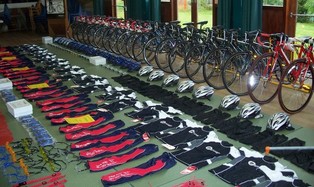 Over the next couple of weeks I am dedicating the blog to tips you should consider for your pre-event planning. While some of these will be sport specific, most of them apply universally or the basic idea can be adapted for different disciplines. The intent is to make you think critically about key aspects of your prep and adapt it to your situation. Have questions or additional ideas or thoughts? Please feel free to post them on the blog or Facebook comments! Equipment prep applies primarily to cycling which we will get to in a minute, but is important to runners and swimmers as well. Had that wetsuit out of the closet in awhile? Make sure it doesn’t have any holes and it still fits (for some athletes those wetsuits can mysteriously shrink over the winter… :-) ) I generally recommend doing a few wetsuit swims even if in the pool prior to a big event to get used to the range of motion and buoyancy impact the suit may have. For runners, make sure the shoes you are going to use for the event are tried and true and you are comfortable with them. If looking to swap out shoes prior to an event, I recommend getting several runs in them even if they are the same style that you are used to. You just never know if there will be some manufacturing error or something odd with a new pair, better to be safe than sorry. Now the biggie in the equipment world, cycling. Based on what you find out about the course (see last entry), pick your equipment, AS EARLY AS POSSIBLE before the event and insure it’s in a top working order. Figure out what bike and wheels you are going to race, your gearing, tires and tire pressures, fork and shock pressures as applicable, etc. The value of doing it as early as possible is you can then train on the equipment you race on and go into the event with confidence that your equipment fits and functions properly and it will not let you down. A lot of folks have a number of different bikes, one they race on, one they train on, TT bike, cross bike etc. Riding different bikes is fine, but once you start targeting a specific event you should try to ride the bike you are going to race (or an exact duplicate in terms of geometry and fit etc.) as far in advance as practical. In the event where you might be racing multiple bikes in a short period of time, just plan on riding your different setups alternating during the weeks prior. The most obvious example would be a stage racer who will race a road setup and TT setup during the same stage race. For this example, I usually recommend riding the TT bike at least 2 or 3 times a week in the weeks proceeding the event, and the road bike on the others days. Preferably the TT bike would be used for longer intensity efforts that most closely simulate race conditions so your body is used to the position under stress. If you have separate racing and training wheels, you obviously don’t want to run your race wheels all the time, but you should still have them selected, inspected and do some test rides on them in the week or so prior to the race to ensure shifting is good, wheels are true, tires are in good condition etc. Additionally, probably the most important item, if you are going to do any major maintenance (change tires, true wheels, overhauls, cable changes, brake pad, cogset, cranks or chain swap out etc.) the rule of thumb is 2 weeks ahead of the event and then leave it alone. That gives you several training rides to sort out if you have any issues and work them out vice figuring out you have an issue on race morning or even worse, during the race. An extra note on brake pads, many bikes with rim brakes may have different compound pads for training and race wheels, and riders will swap out before events. Just make sure you have a set that you are confident work on your race wheels and as outlined for you wheels, I recommend riding them at least once or twice prior to the actual race to ensure they are set up right. This is especially important if you are putting brand new pads in! Nothing worse than having squealing brakes throughout a long race because your pads weren’t aligned right when you put new ones on. Last but not least, make sure your bike is clean and well lubricated prior to the event. A clean bike is a fast bike, why haul that extra grit and dirt around and clog up your drivetrain? Also, while cleaning your bike, you are more likely to notice any issues like cracks, something loose or out of alignment, the cleaning kind of makes you give your bike a good visual inspection. On top of it all, if you have sponsors, it presents a professional image for both you and those supporting you. Next up environmental conditions. Thanks for reading. Any questions or stuff to add, please feel to post up in the comments in FB or on the blog.  Over the next couple of weeks I am dedicating the blog to tips you should consider for your pre-event planning. While some of these will be sport specific, most of them apply universally or the basic idea can be adapted for different disciplines. The intent is to make you think critically about key aspects of your prep and adapt it to your situation. Have questions or additional ideas or thoughts? Please feel free to post them on the blog or Facebook comments! Building up for a big race? Got a great training plan? Fitness looking good? What about the “rest of the picture” in terms of prep? What are you talking about you say? I am killing it on Strava, my power numbers are through the roof! What else could there possibly be? You could have the greatest fitness of all time, but have your race ruined by not paying attention to other preparation and logistical details. The fun and frustrating part of racing is the outcome is unpredictable, and there is only so much you have control over (my kingdom for a horse anyone?). The name of the game is increasing your odds of success by preparing as best as you can in all areas that you can influence. Over the next couple of weeks I am dedicating the blog to tips you should consider for your pre-event planning. While some of these will be sport specific, most of them apply universally or the basic idea can be adapted for different disciplines. The intent is to make you think critically about key aspects of your prep and adapt it to your situation. Have questions or additional ideas or thoughts? Please feel free to post them on the blog or Facebook comments! Know the Course: Duh, right? Of course you need to know the course, but you would be surprised how many people I have run into running, cycling and in multisport that morning of the race are asking questions about key course details or are complaining afterwards about how they misjudged this or that. In today’s day and age, unless there is a last minute change, just about any course detail can be figure out in advance and leave you with less stress on race morning and better results at the end of the day. A few of the many factors to consider include: how long is the race, is it hilly, flat, climbing, lots of corners, loops etc., when do the key “features” appear on the course, what are the road surfaces like, where are the key tactical points, potential bottlenecks, points where you are at an advantage or disadvantage based on your strengths. Prevailing environmental conditions are also important and we will expand on that in an upcoming entry. For cycling races, where tactics are more at play, what has the history of the event been, sprint? break? does the race blow apart on a particular “course feature”? based on you and your team’s strengths and weaknesses, where do you make your “move” or defend and how does the course factor into your tactical planning? For triathlon, what about transition areas and how they are routed, entrances and exits etc.? All great factors to consider, and ideally you know as much of this as possible as far in advance so it can be factored into training, your mental preparations, and race nutrition and equipment selection which we will go over in an upcoming entry. So how do you figure it all out? If feasible, taking a look for yourself and reviewing the course or sections of it firsthand is ideal. For complicated or technical courses, this is a HUGE advantage. If a pre ride is not practical, another option is to just use various online tools to plot out the course as closely as possible and at least study the profile. Training Peaks, Strava and Ride with GPS all have cycling specific mapping tools and may have “hot spots” or even the whole course marked so you can study profiles, section distances, turns etc. and see how fast other riders have done sections. Race websites often have extensive overviews of course nowadays many bigger races even have dedicated forums or social media outlets where you can chat with race officials or participants who have done the event before and ask questions about the event. Don’t be afraid to talk to anyone you may know or run into who has done the event in the past. Most people are happy share their past race experiences (I don’t know an endurance athlete who doesn’t like to talk about a past race) to get a sense of how certain sections may go down. If there are key course sections such as climbs, you can figure out the parameters and hunt down similar features locally to duplicate the terrain in training. If you want to get really high tech and have the cash, for cyclists, you can use tools such as a Computrainer to reproduce the course and virtually ride it at home indoors. Basically all is fair in love and war on this front. The longer, more varied and technical the course is, the more value there is in gathering intelligence and being familiar and comfortable. Knowledge is power and course knowledge can give you confidence, calm your nerves and give you a strategic advantage over you competitors. Next time. Equipment Prep. Thanks for reading. Questions or additional ideas or thoughts? Please feel free to post them on the blog or Facebook comments! |

